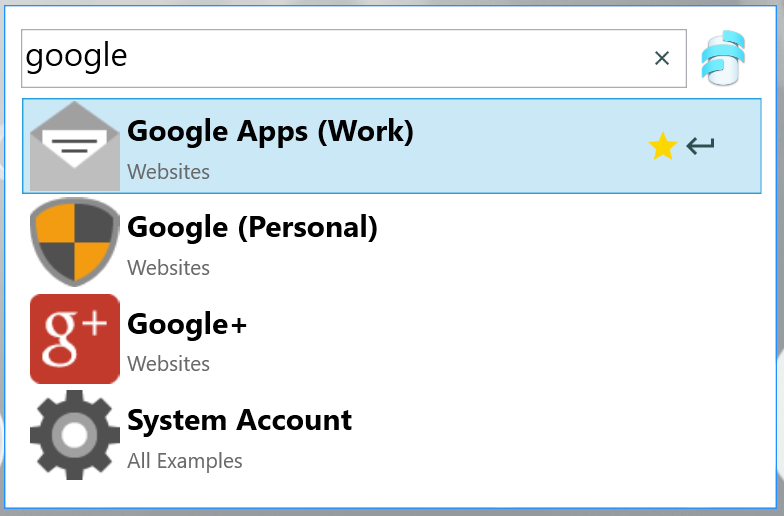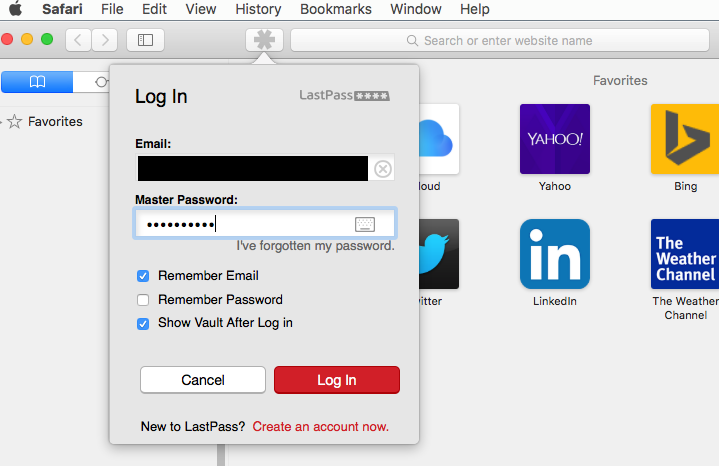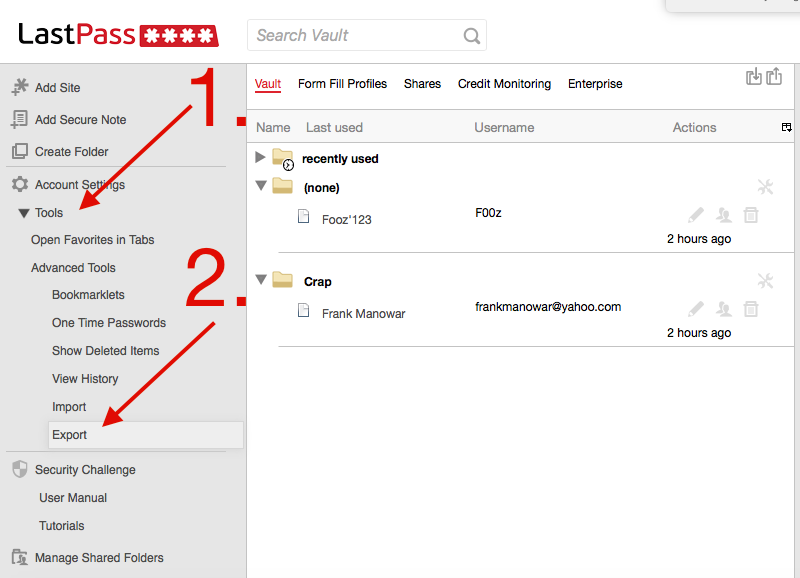We are very excited to announce some new and very important changes to the STRIP Password Manager:
- STRIP has been renamed to Codebook: The STRIP icon will be replaced with a new Codebook icon. All the logos, icons and colors are updated.
- Dedicated Notes: You can now store dedicated Notes in Codebook. These are perfect for storing longer, free-form text.
- Favorites: You can now mark your most important entries with a Favorite Star to make them show up in a dedicated quick access view and as the first entries returned in searches.
STRIP to Codebook 3 (and a bit of history)
One of the most visible changes is that STRIP is being renamed to Codebook, version 3. The application now has a brand new logo, icon, and color scheme to match, professionally designed by the excellent team from the Icon Factory.
Some of our most dedicated users will remember that STRIP was first released over 17 years ago for Palm OS. The acronym, Secure Tool for Recalling Important Passwords, seemed playful and unique at the time. However, the name hasn not aged as well as the application itself. Over time:
- Searches for the product started returning unrelated adult content
- People found the name potentially offensive
- The name became generally unwelcome among our customers
Thus, even though the application has became well known as STRIP, the time has come to change.
So, if you don’t see STRIP after you upgrade, don’t panic! The old STRIP icon will be replaced with a shiny new Codebook icon like this.

Some users may be aware that Zetetic previously released a different product named Codebook, a simple note taking tool for iOS, several years ago. After this release users of the old Codebook will have the option to migrate their data into the new Codebook application (more on that here - Migration Document).
Going forward, there will be only one Codebook!
Dedicated Notes
This brings us to one of the new features in this release: dedicated note entries. While standard entries are great for organizing the multitude of small fields and values that apply for most accounts, they are not optimized for larger bodies of free-form text.
A new “Notes” feature allows you to quickly and easily create text-based notes with a single tap, which can be organized separately or alongside other entries.

Favorites
Another major feature in the release is the ability to mark important entries as “Favorites”. By marking an entry with a Favorite star, the record will automatically show up in a new Favorites view for quick access.

Favorites automatically sort to the top of search results, both within the standard search function and in Secret Agent on the desktop. This allows you to very quickly access your most critical information in Codebook at a moment’s notice.

Other Improvements
Codebook 3 is also packed with other enhancements, improvements, and numerous bug fixes for every supported platform.
Upgrade Notes
Upgrading to Codebook is really easy. On most platforms, you’ll just need to run the update and look for the new icon. On iOS, if you have auto-update enabled, you may already have it installed!
Explicit instructions for updating Codebook are available on the upgrade FAQ, but here is the short summary:
-
Please backup your mobile devices and desktop databases before upgrading, either via WiFi, Dropbox, or Google Drive!
-
After the upgrade, the old STRIP icon will be replaced with a new Codebook icon. If you can’t find STRIP, look for Codebook instead. All your data will remain intact.
-
When you log in to Codebook for the first time the database format will be updated. Due to database file and feature improvements, STRIP 2.x will not sync with Codebook. Therefore, you should plan to update all of your devices and applications to Codebook at around the same time.
Feedback and Support
We are here to help during this transition in case you have any questions or difficulties with the upgrade process. Don’t hesitate to contact us:
Finally, once you’ve had a chance to try Codebook, we’d really like to get your feedback about the new look and features.

Following the release of the SQLCipher for Windows Universal Application Platform package, we have issued a major update to our SQLCipher packages on the Xamarin platform which now includes PCL support.
SQLCipher for Xamarin iOS and SQLCipher for Xamarin Android include two different client libraries for interfacing with a SQLCipher database. First, the Mono.Data.Sqlcipher library for data access with an ADO.NET style interface. We have recently replaced our second client library, previously based on sqlite-net with that of SQLite.Net.Core-PCL. While the new library maintains much of the same behavior as its predecessor, providing a light weight ORM, it is now PCL compatible. This will allow developers targeting both iOS and Android devices using the Xamarin platform to share much of their data model source code, minimizing duplication across platforms.
A sample below shows how quickly you can construct a secured SQLCipher database connection for your Xamarin iOS application.
var password = "SQLCipher!";
var documentsPath = Environment.GetFolderPath(Environment.SpecialFolder.Personal);
var libraryPath = Path.Combine(documentsPath, "..", "Library");
var databasePath = Path.Combine(libraryPath, "sqlcipher.db");
var conn = new SQLiteConnection(new SQLitePlatformIOS(password), databasePath);
If you are interested in giving either SQLCipher for Xamarin iOS, or SQLCipher for Xamarin Android a try, trials are available for both. Please feel to reach out if you have any questions.
We are happy to announce the immediate availability of our commercial SQLCipher for Windows Universal Application Platform package, available for purchase here. We have previously supported both the Windows Runtime and Windows Phone platforms as separate component packages, however moving to the Windows 10 platform allows for a different approach. We will continue to support the older individual packages with updates to SQLCipher, however for developers looking to strictly target Windows 10 on the desktop, and/or Windows 10 Mobile we now have a unified package option.
Application Integration
The new package is bundled as a Visual Studio extension and local Nuget package. The client library itself uses the SQLite.Net.Core-PCL component providing a lightweight ORM interface. Utilizing a PCL component at the base allows for shared database logic between Windows 10 and Windows 10 Mobile projects, further simplifying the developers ability to target multiple platforms and minimize code duplication.

The component packaging includes precompiled binaries, documentation, and demos to allow for quick integration of new or existing projects wishing to protect their data. A sample below shows how quickly you can construct a secured SQLCipher database connection for your Windows 10, or Windows 10 Mobile application.
var key = "SQLCipher!";
var databaseFile = "test.db";
var databasePath = Path.Combine(ApplicationData.Current.LocalFolder.Path, databaseFile);
var connection = new SQLiteConnection(new SQLitePlatformWinRT(key), databasePath);
Please note, this new package requires usage of Visual Studio 2015. SQLCipher for Windows Universal Application Platform does not work within the Windows Phone 8.0/8.1 platforms, nor does it work on the Windows Runtime operating system; we offer separate packages for these environments. Please feel free to reach out to us if you have any questions.
Update: This blog post is outdated. We have since updated our instructions for switching from LastPass to Codebook in our documentation.
Perhaps it’s because LastPass has been in the news—the company has recently been purchased by LogMeIn—we’ve gotten some inquiries as to how one can import LastPass data in STRIP. It’s pretty easy:
1. Log in to your LastPass Vault

2. Click on Tools > Export

3. Save the file and open it with a text or spreadsheet editor

4. Rename “name” to “Entry” and “grouping” to “Category“

Note that Entry and Category are capitalized. Save your changes and close the file.
5. Launch STRIP, login, select File > Import
Select the CSV file you just edited.
That’s it!
STRIP is a password manager and data vault. But much more than that, STRIP offers a flexible data model, cross platform sync, excellent customer service, and a high standard of data encryption. The history of STRIP began back in 1998 as an app for the Palm OS. Ever since then, STRIP has been advancing with its full database encryption using AES-256, user interface, and additional features which make it stand out. It is important to note that this is a standalone application: no account registration needed. Your data is yours to keep. Even when you sync, your data is fully encrypted and can remain cloudless if you sync over wifi. This video gives an overview of what STRIP is and dives into it’s features.
As always, if there are any questions, concerns, issues, or feedback please let us know.









